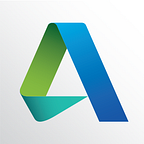Making diversity more than a statistic in Silicon Valley
By: Daniel Guillory, head of global diversity and inclusion, Autodesk
From Hollywood to Silicon Valley, diversity has been a hot topic in the news — and for good reason. Reports state that the employees at leading technology firms are, on average, 71 percent male, 60 percent white and only 8 percent Latino and 7 percent black. By not cultivating a diverse workforce, these companies are missing out on increased creativity, productivity, and financial performance. While big firms companies like Intel are committing to change and increase the diversity of its workforce, we still have a lot of work to do.
Because what happens once employees are recruited, hired, and part of the workforce? In my two decades of working on diversity and inclusion initiatives, I’ve found that most organizations stop their efforts too early and focus heavily on the recruitment stage, while neglecting to implement an ecosystem that supports diversity and inclusion. And as we begin celebrating the LGBTQ community at our local Pride Parades, we need to think about how to support employees of all ethnicities, races, religions, genders, ages, physical abilities, and sexual orientations once they join an organization.
What does diversity mean?
Before a company can measure and practice diversity and inclusion, it must first clarify what diversity means to their organization and what success looks like. All too often, companies set goals on workforce composition; stating they want a percentage of engineers with a certain background, or to change the ratio of hires.
This definition is too narrow, and diversity is much more than having an environment where there’s a group of people that are different. It’s when these differences are actually valued and integrated into every part of the business, on a day to day level as well as at a strategic level, that a group can be truly defined as diverse. This is much more comprehensive, strategic, and creates objectives that include, but move far beyond composition. Each company can and will define diversity differently, but should always keep in mind how that definition aligns with their core business values and positively impact everyday business operations.
From new employee to valued employee
A true inclusive workplace is open and transparent, with managers who seek out diverse opinions and input, and where all employees experience equitable opportunity for personal success and to contribute to the organization’s success.
Creating a system of inclusiveness requires creating a strong foundation, building an infrastructure, and integrating diversity and inclusion into business functions. Maintaining this type of diverse and inclusive culture requires a mix of organizational support, think executive champions or advocates, as well as grassroots efforts, like employees who are willing to start employee-run resource groups.
Autodesk is lucky enough to experience this rare combination with our LGBTQ employees. What started as a grassroots committee in San Francisco last year is now a thriving a global movement for the company. Last year a small committee designed and organized the first Autodesk SF Pride float, and this year they’ve helped our Boston and Montreal offices engage with their local LGBTQ communities and Pride parades.
By not cultivating a diverse workforce, these companies are missing out increased creativity, productivity, and financial performance.
But most importantly, these committees are helping make the Autodesk culture more inclusive in very tangible ways. Working with the company, the committee secured non-surgical and surgical gender reassignment treatment under US medical insurance plans, ensuring all employees have the ability to feel authentic at work.
To have any level of long term success, each of these efforts will require the participation of everyone in an organization. And what is exciting is that because we are at the beginning of this journey, it is something that each of us can help to shape.
Danny is Autodesk’s new head of global diversity and inclusion, where he is focused on helping the company further leverage its human, cultural and systems differences as a competitive advantage. Danny’s is currently focused on creating the first global diversity and inclusion strategy, which includes clarifying why diversity and inclusion are relevant to Autodesk, and explaining how all employees can help create a more inclusive culture.
